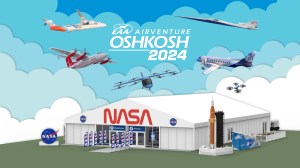NASA and its partners are in the midst of testing the next, more complex version of its Unmanned Aircraft Systems (UAS) Traffic Management (UTM) technologies with live, remotely-operated aircraft, or drones, at six different sites around the nation.
The three-week campaign, known as Technology Capability Level 2 (TCL2) National Campaign, began May 9 and is focused on flying small drones beyond the pilot’s visual line of sight over sparsely populated areas near six of the Federal Aviation Administration (FAA) test sites.
Current testing of TCL2 marks the second year in a row NASA has taken its UTM technologies on the road to further assess and refine their capabilities. During April 2016, NASA and its partners tested TCL1, which involved line-of-sight operations, and then began the first phase of TCL2 demonstrations in October.
“Being able to design, build and test each TCL phase at NASA, and then take it to the six FAA UAS test sites for more in-depth analysis, is a productive way to conduct comprehensive evaluations,” said Tom Prevot, associate project manager for NASA’s Safe Autonomous Systems Operations Project and lead of NASA’s UTM efforts.
“We have a great relationship with the FAA and truly appreciate their support and collaboration through the NASA/FAA Research Transition Team,” Prevot said.
For TCL2, participants are interacting with the UTM research platform by entering their drone’s scheduled flight plans. The UTM system then checks for conflicts, approves or rejects the plan, and notifies users of any potential constraints.
Meanwhile, engineers at NASA’s Ames Research Center in California’s Silicon Valley monitor operations and system load, and gather qualitative feedback to identify opportunities to expand capability and further refine the UTM working models.
“Industry will have a major role to play in the implementation, operation, and maintenance of UTM systems in U.S. airspace Airspace and this campaign of test activities will provide a glimpse into how they will play these roles by connecting their system prototypes and components with NASA’s UTM research platform” said Arwa Aweiss, the TCL2 National Campaign Coordinator.
As opposed to last year, when drones were flying simultaneously at six test sites, this time each test site is operating on their own schedule. As the UTM Lab at Ames monitors these flights, researchers can introduce simulated aircraft into the same airspace as the real drones to add more complexity to the system.
This mixing of actual flights with virtual flights provides additional insight for future tests and helps to further refine and improve the UTM concept.
As part of the testing, the drones are flying profiles that simulate real-world uses for the aircraft, such as package deliveries, farmland surveys, infrastructure inspections, search and rescue missions, and video surveillance operations.
“This campaign demonstrates how teams from a variety of agencies can collaborate and find solutions that address the technical hurdles facing Federal regulators,” said Chris Walach, director of the FAA-designated Nevada UAS Test Site. “Nevada stands ready to become a premiere service provider as drone use becomes more prominent.”
In addition to the FAA and the NIAS, NASA’s partners include the Reno Tahoe Airport Authority, University of Nevada Reno, Flirtey, Drone America, AirMap, Gryphon Sensors, FlySpan, and Harris.
Together they are using relatively new technologies to include geofencing and conformance monitoring, airborne sense and avoid, communication, navigation, and surveillance, and human factors related to UTM data creation and display.
Two more phases, TCL3 and TCL4, each progressively more complex and involving flying drones with specific tasks over increasingly populated areas, are scheduled for 2018 and beyond.
NASA turns over its UTM research to the FAA in a sequence of research transition products linked to the TCL tests between now and 2019 for further testing and implementation.
This research is conducted by Airspace Operations and Safety Program under NASA’s Aeronautics Research Mission Directorate.
Four of NASA’s research centers – Ames, NASA’s Armstrong Flight Research Center in Edwards, California, Glenn Research Center in Cleveland and Langley Research Center in Hampton, Virginia – are actively involved in the agency’s UTM initiative.


































